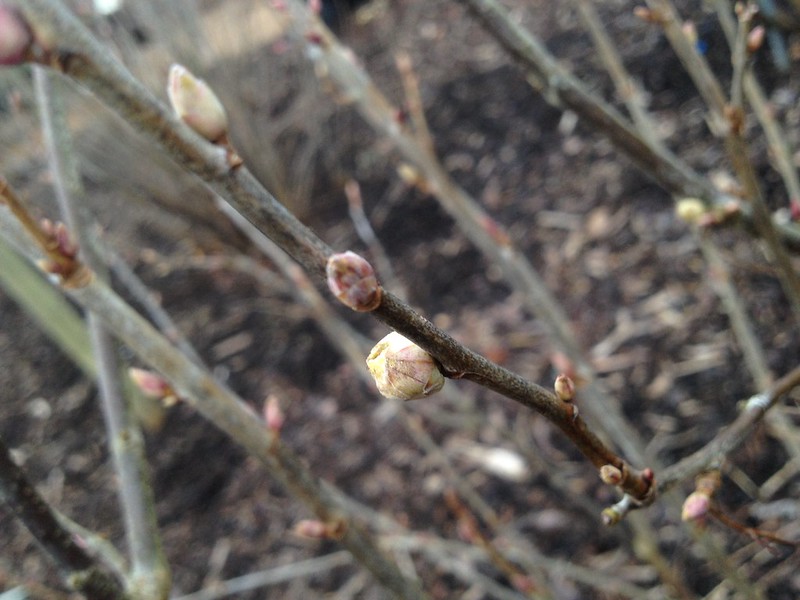Fascinating life forms, viruses: DNA/RNA sequences coated in protein, that are dormant at maturity and so can survive for hundred of years only to be activated when they manage to get into a cell of a suitable host. You generally don't want a virus on your plants, though, as there is no cure. I say generally as, even more fascinating, some plants are bred from infected material, as the symptoms of the infection may be aesthetically pleasing: like colour streaks, or fraying of leaves and petals. But you definitely do not want infections of fruit trees when the symptoms include reduced fruiting ability, which is what reversion disease eventually ends up in.
But back to our Cecidophyopsis, in the summer it crawls out of its nest (in one of the previous year's buds, that has by then died and dried up, failing to perform its function), together with hundreds of its siblings, and goes in search of new bud to inhabit. The new abode, where it settles and start feeding on the sap of embrionic leaves, becomes apparent in late winter as a round and swollen bud in the midst of long and tapered ones.
 |
| A big bud among regular ones |
As the collection here at Wisley (some 40 cultivars) is suffering from repeated attacks, and because the plants are many and in close quarters, we needed more drastic action than just the picking off of buds. So we spent today stooling (pruning right down to the ground) all the plants in order to try and get rid of this pest.
Here's a picture of one such plants, before and after stooling.
 |  |
| Before | After |
We found big buds right down to the bottom of branches, so it was worth cutting right down to the ground, the shortest stumps possible left. I myself think that new buds emerging from the ground will have a better chance to thrive if they can grow without having to twist around any obstacles, which stumps tend to be, especially if at an angle.
Blackcurrants fruit on second year wood (and onwards, but less prolifically). Because of that, pruning usually entails cutting about 1/3 of the oldest wood back to the ground, but leaving stems up to 3 years old intact for framework and fruiting. That means that we won't get any fruiting from the plants we stooled this year, but they will hopefully fruit well in the summer 2016.
Fruits will be used to help check which cultivar is which, and, once tested for the absence of virus, the plants will provide the propagation material for the next generation of the RHS Garden Wisley blackberry collection.
No comments:
Post a Comment